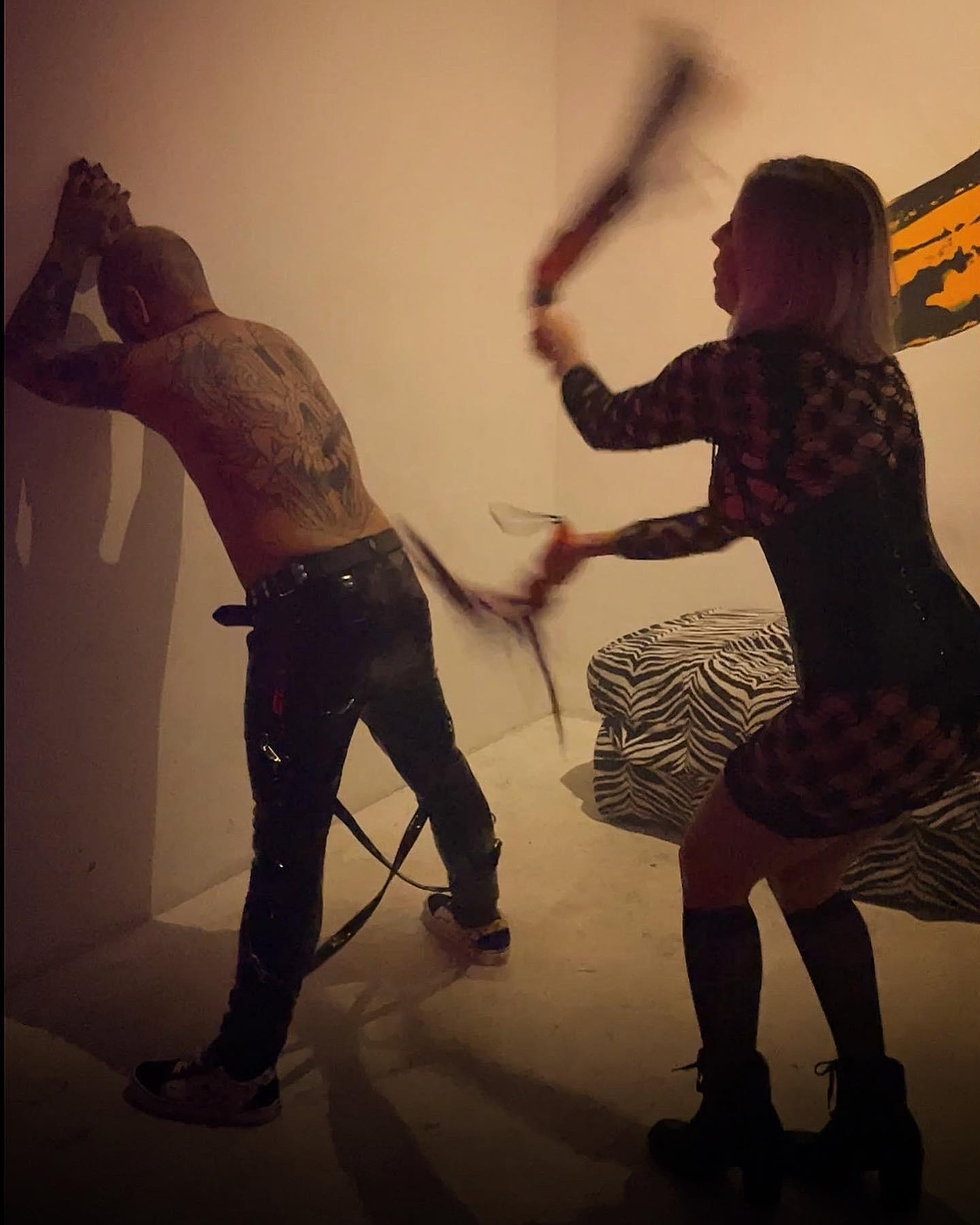When we first started exploring kink, we took basic workshops and flogging classes. Then I started learning how to spin poi and applying that technique to spinning floggers. And finally, I had to figure out how to make impact cleanly and consistently while spinning floggers like poi. This last step is always the biggest challenge, but it’s also been a fun puzzle to solve with each new poi move I try to adapt.
If you’d like to take a similar path, DrexFactor is the leading resource on the internet for learning poi. I suggest starting with his tutorials.
Learning Florentine
If you want to learn Florentine flogging, there are plenty of tutorials on the internet with detailed breakdowns of the basic moves. As such, I don’t reinvent that particular wheel on here (though I do have videos you can practice along to). Instead, my goal is to lay the foundation to get you to Florentine, because most tutorials don’t actually do that. And then this foundation will serve as your take-off point to go far beyond Florentine.
It’s like how every guitar teacher in the world has been asked by a beginning student to teach them how to play Stairway to Heaven. (Okay, fine … every guitar teacher from my generation.) Well, I could teach you the exact Stairway to Heaven riff, and that’s all you’d ever be able to play. Or, we could start with the fundamentals of guitar. And at first, you might be like, “What is all this boring crap I’m learning? When do we get to Stairway to Heaven???”
And I’ll be like, “Patience. Just trust me on this one.”
And so you do. And you practice all the fundamentals first. And then before you know it, Stairway will be just one of countless songs you’ll be able to play. And you’ll actually sound good playing them.
That’s my goal here — to teach you the fundamentals, so you can flog accurately, precisely, and safely.

Terminology
Okay! From this point on is where I start to get technical. If you’re just looking to learn a few new flogging moves, you don’t necessarily need to know all the vocabulary. Just remember that if you want to move beyond basic Florentine at some point, it will be helpful to understand the fundamental movements.
When referring to flogging moves, I use the names of their original poi moves. So for instance, Florentine is really just the two-beat weave or the three-beat weave. Beyond that, I incorporate poi buzzsaws, corkscrews, and C-CAPs as some of my more common flow flogging moves.
I also use poi terminology to refer to the direction I’m spinning the floggers:
- Together-Same
- Split-Same
- Together-Opposite
- Split-Opposite
Together-same: both floggers strike at the same time, both move in the same direction.
Split-same: the two floggers alternate strikes, both move in the same direction.
Together-opposite*: both floggers strike at the same time, but move in opposite directions.
Split-opposite*: the two floggers alternate strikes, and also move in opposite directions.
Learning the different combinations will allow you to deliver a wide array of sensations to your bottom. Ultimately, it’s how you move from basic Florentine to full-on flow flogging (try saying that out loud a few times).
*Note: Depending on your angle of impact, together-opposite when flogging may actually be closer to split-opposite in poi, and vice versa. You don’t have to worry about this, though, unless you’re getting into the mechanics minutiae of poi versus flogging. I’m only leaving this footnote here in case an experienced poi spinner is reading this.
<< Previous section: Flogger Options
>> Next section: Practice Goals

 Chanel earrings, CC earrings adorned with pearls v40
Chanel earrings, CC earrings adorned with pearls v40  Chanel earrings, CC dangle earrings in water drop shape adorned with stones and pearls v39
Chanel earrings, CC dangle earrings in water drop shape adorned with stones and pearls v39 